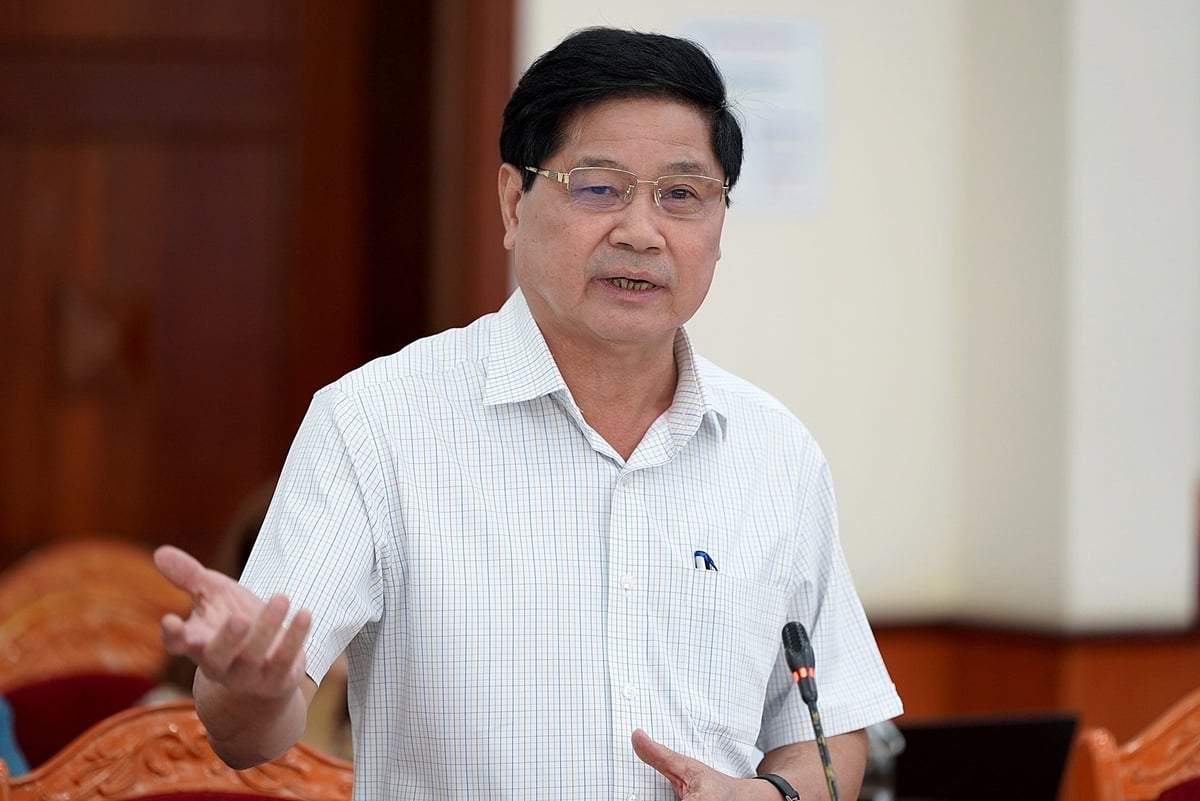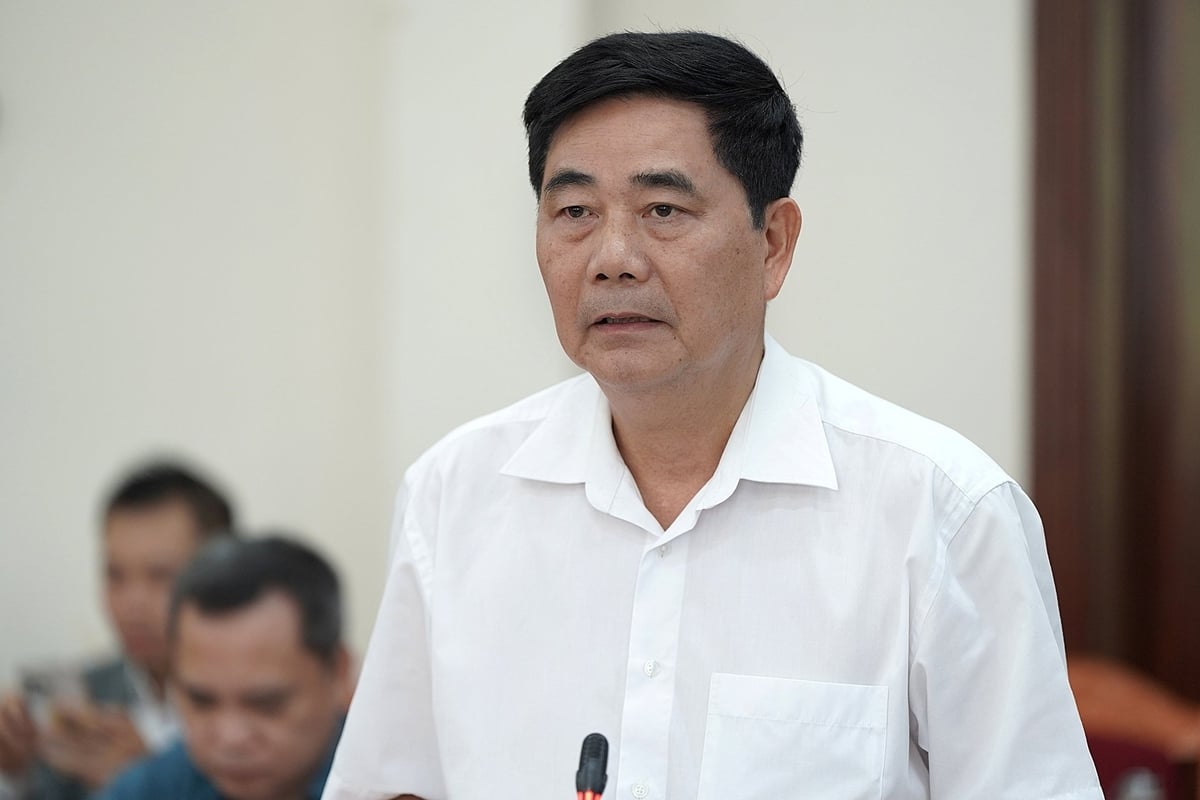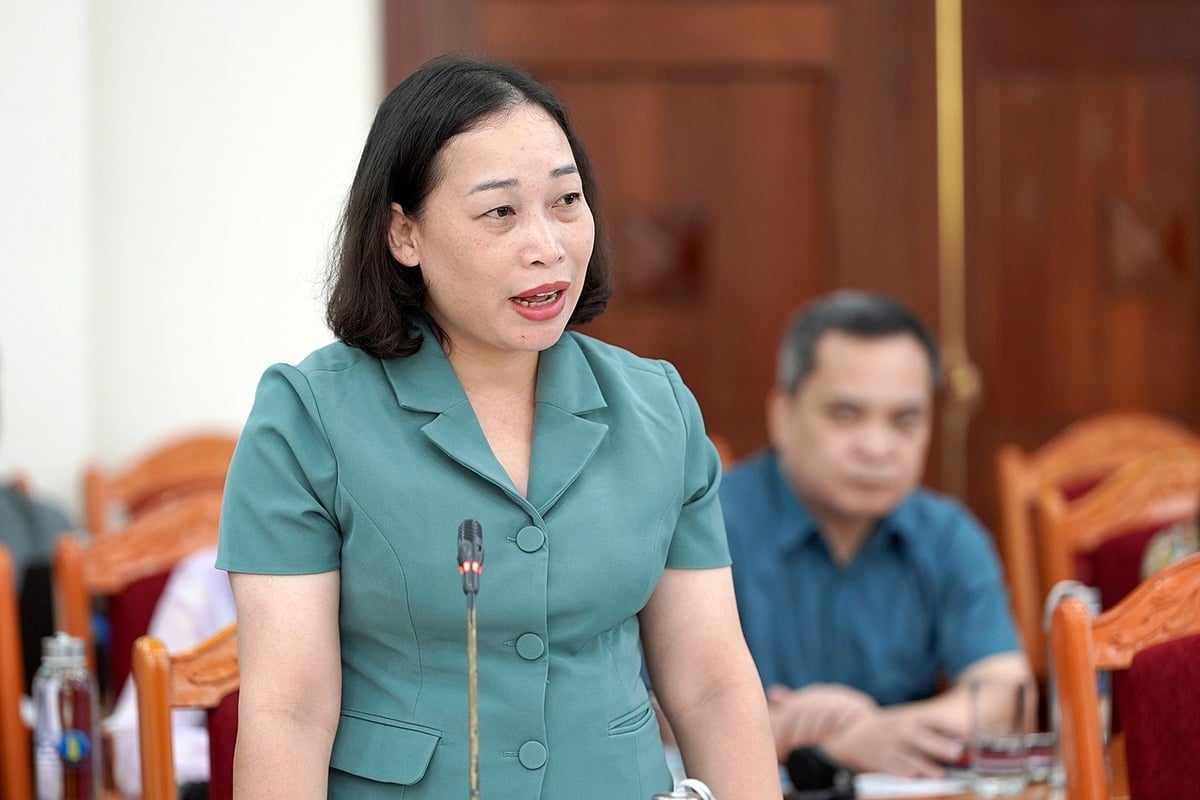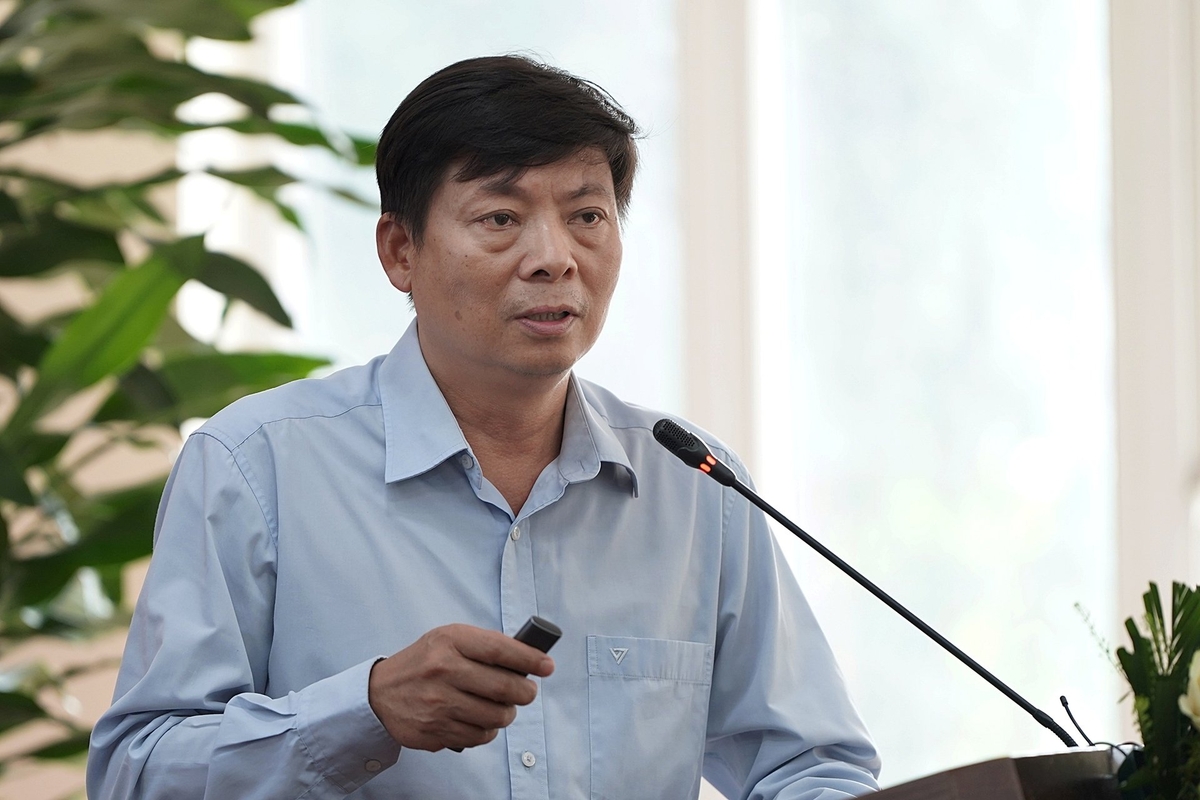December 5, 2025 | 06:33 GMT +7
December 5, 2025 | 06:33 GMT +7
Hotline: 0913.378.918
December 5, 2025 | 06:33 GMT +7
Hotline: 0913.378.918

Former Deputy Minister Le Quoc Doanh: "Do not be perfectionist in selecting crops and cultivation areas under the project." Photo: Bao Thang.
At the consultation conference on the draft plan for low-emission crop production held on July 30, Mr. Le Quoc Doanh, former Deputy Minister of the MARD, affirmed that Vietnam has a solid foundation to implement low-emission agricultural models effectively, thanks to the technical groundwork accumulated over the years and a nationwide network of professional support systems.
One notable viewpoint raised by Mr. Le Quoc Doanh was “not being perfectionist” when selecting crops or cultivation areas. Therefore, according to him, the plan must be flexible and should not impose limits on the number of crop types or geographical areas to be applied. Instead, it is necessary to promote the spirit of local adaptability, select models suitable for specific local conditions, and then expand successful models.
As the direct leader of the VnSAT Project, the former Deputy Minister emphasized the role of communication. He believed that one of the major transformations in the rice and coffee sectors (two of the crops included in the plan) was the establishment of trust among farmers. Once people believe in the effectiveness of sustainable production models, implementing technical content and changing cultivation habits becomes significantly smoother.
Low emissions are not just an environmental requirement but also an opportunity to increase economic value and competitiveness. Mr. Doanh believes that if the plan is actively implemented, Vietnamese agricultural products will have many opportunities to reach international markets, especially based on the foundation of the nationwide agricultural research system.

Former Minister Cao Duc Phat: "It is necessary to create motivation for people to actively reduce emissions." Photo: Bao Thang.
Mr. Cao Duc Phat, former Minister of the Ministry of Agriculture and Rural Development, stated that emission reduction policies can only succeed if they create strong enough economic incentives for farmers to voluntarily participate.
Drawing from decades of experience, the former Minister recommended not assuming that simply issuing a requirement would make people comply. If the goal is to change farming practices, the plan must demonstrate that the new methods help farmers earn better profits with lower risks.
He also noted that the plan should focus on sectors with significant emission reduction potential, large cultivation areas, relatively stable value chains, and clear markets. Rice is a prime example, as it is considered a high-emission sector but also one where technical interventions are feasible and results are easily measurable. The plan can make rice a central crop, perfect the model, and then expand outward.
Additionally, he suggested prioritizing regions with favorable conditions to develop pilot models and then spreading awareness through media. Efforts should not be spread too thin but instead concentrated on breakthrough points to create profound, widespread impact.
While acknowledging the benefits of low-emission farming, the former Minister also recommended that the drafting agency study and propose financial mechanisms to support farmers. He noted that without preferential credit or appropriate input support, it will be difficult for farmers to change, as low-emission cultivation often requires higher initial investment and more extended payback periods.
In summary, Mr. Cao Duc Phat emphasized that low-emission production must not become a burden but instead be a solution to enhance the value of agricultural products and increase farmers' income.

Deputy Director of Hai Phong Department of Agriculture and Environment, Luong Thi Kiem, spoke at the conference. Photo: Bao Thang.
Mrs. Luong Thi Kiem, Deputy Director of the Department of Agriculture and Environment of Hai Phong, stated that the city has had one of the largest agricultural land areas in northern Vietnam since the administrative merger. Despite rapid urbanization, about 40% of the rural population still depends on agriculture. Over the next 10–20 years, agriculture will continue to play an important role in the city's economic structure.
From the South, Mrs. Dinh Thi Phuong Khanh, Deputy Director of the Department of Agriculture and Environment of Tay Ninh, proposed that the plan should extend its vision to 2050 to align with the Government’s Net Zero commitment.
Tay Ninh also suggested categorizing the crops in the plan into groups such as fruit trees, industrial crops, and food crops to build more comprehensive and suitable solutions nationwide. This would help localities access technical knowledge more easily and select models suitable for their climate, soil, and economic structure.
Another major challenge Tay Ninh faces is the limited human resources after merging administrative levels. Currently, there are only one or two agricultural officers at the commune level, while the area is vast and the need for technical support among farmers is high.

Mr. Mai Van Trinh shared four basic methods to reduce emissions in wet rice cultivation. Photo: Bao Thang.
Emphasizing that greenhouse gas inventory is a mandatory foundation if Vietnam wants to achieve its emission reduction goals in agriculture in general effectively and crop production in particular, Mr. Mai Van Trinh, Director of the Institute for Agricultural Environment, stated, “We cannot build policies or shape emission reduction roadmaps if we don’t know exactly how much we’re emitting, where, and from what sources.”
According to Mr. Trinh, one of the largest sources of emissions in crop production is methane (CH4) from wet rice cultivation. This gas has a global warming potential 28 times higher than CO2. Notably, CH4 emissions depend on many factors such as irrigation practices, soil type, amount of organic fertilizer applied, and ambient temperature.
Specifically, the “traditional double-rice crop” model can emit up to 13 tons of CO2/ha/year, whereas applying alternate wetting and drying (AWD) irrigation can reduce this to 7.15 tons. Other cultivation models like rice-shrimp (6.5 tons CO2/ha/year), lotus, or fruit trees (0.275 - 1.1 tons CO2/ha/year) have significantly lower emissions.
Mr. Trinh believes that to ensure accurate inventory, it is necessary to collect detailed activity data, including cultivated area, crop type, irrigation regime, type of fertilizer, amount of lime used, and how by-products are managed. For instance, burning straw in the field results in different emissions compared to using straw for compost or biochar production.
Besides inventory, the application of emission-reducing technologies must be strengthened. A typical example is the straw recycling model, where instead of burning in the field, straw is used for mushroom cultivation, then composted or turned into biochar to be reapplied to crops. This model not only reduces emissions but also improves soil quality and boosts economic efficiency.
Translated by Huong Giang
/2025/12/02/2629-3-141849_60.jpg)
(VAN) Based on its large-scale planted forests, several rubber enterprises have proactively conducted greenhouse gas emission inventories in preparation for entering the forest carbon credit market.

(VAN) MAE is leading in developing a national rare earth strategy, which will be submitted to the competent authorities for promulgation in early 2026.
/2025/12/02/4006-4-092040_652.jpg)
(VAN) The model of converting low-efficiency rice land to aquaculture in many localities has helped increase incomes by 5 to 15 times, improve the environment, and form new fisheries economic zones.

(VAN) Funded by ACIAR, Project FST/2020/123 focuses on measures to prevent harmful alien species, thereby protecting forests from invasive threats.

(VAN) The National Assembly's Supervisory Delegation pointed out solutions for the blue economy, circular economy, environmental protection, and technology application for sustainable marine governance.

(VAN) Lao Cai’s forestry sector is stepping into the spotlight with a series of pioneering initiatives in forest management, monitoring, and sustainable development aimed at generating carbon credits.

(VAN) The Provincial Competitiveness and Governance Index (PCGI) is a tool designed to reflect the quality of local governance.